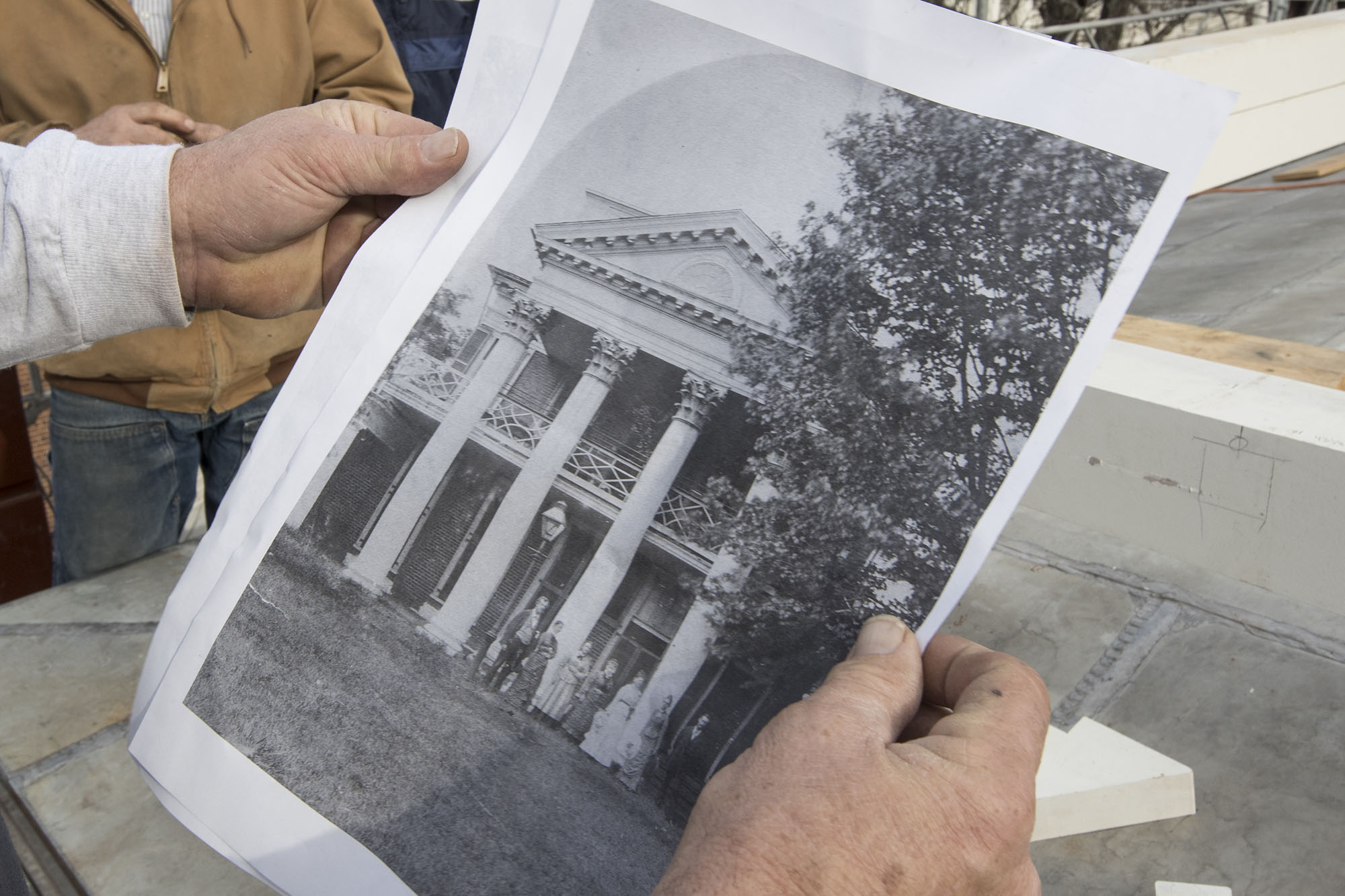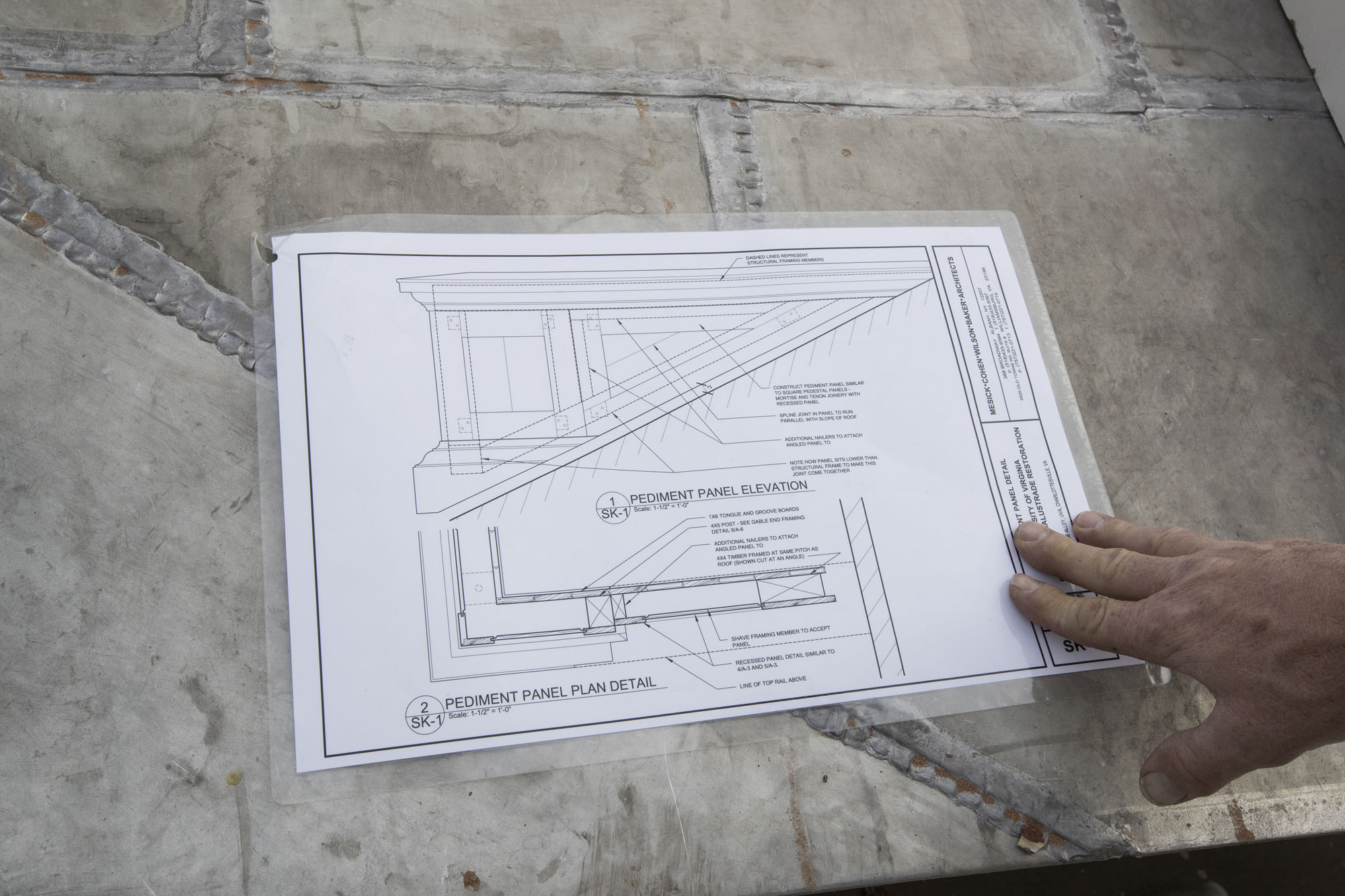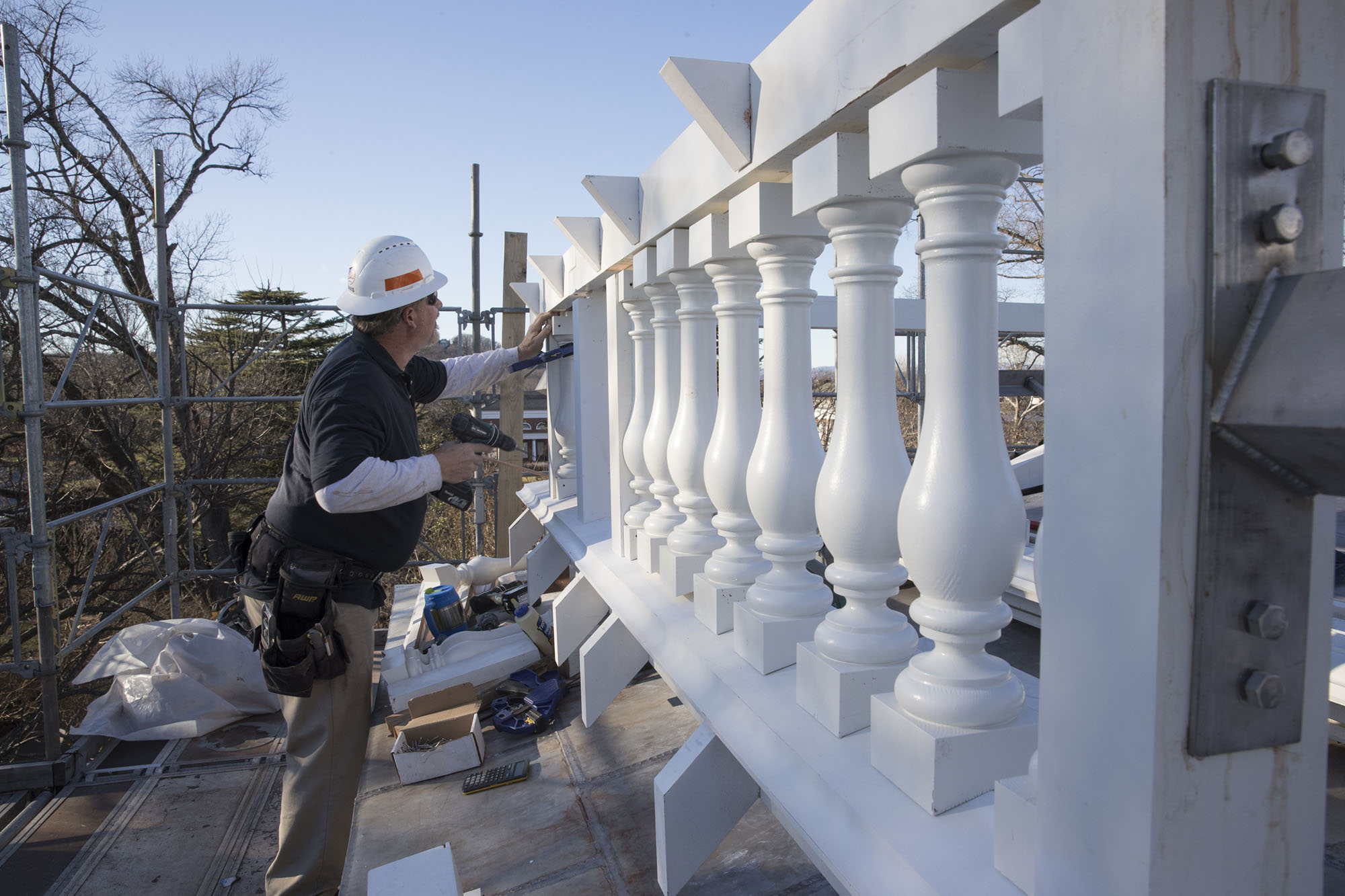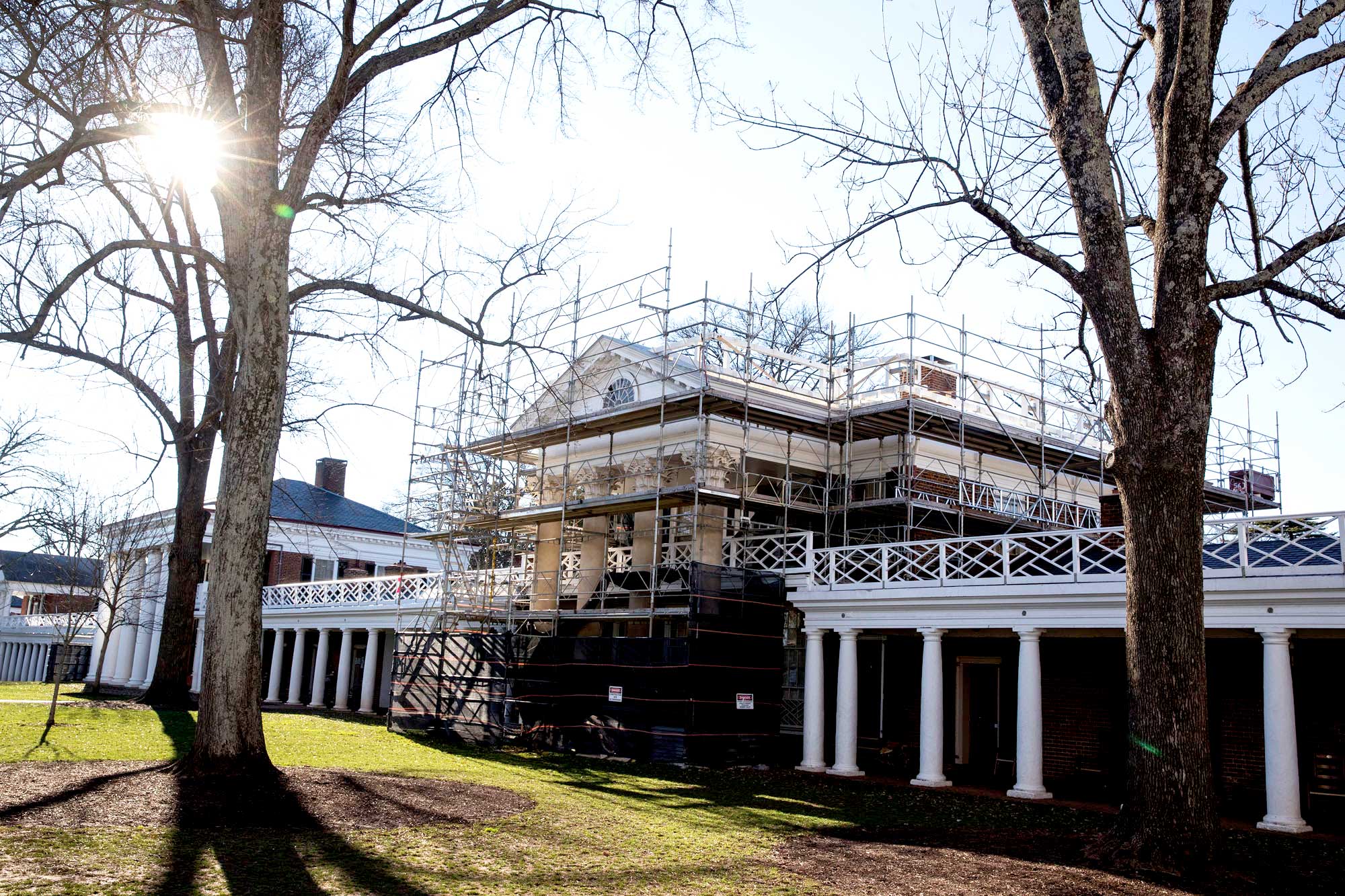Pavilion III in the University of Virginia’s Academical Village will look a lot more like its original self soon, once a balustrade has been restored to its gable roof.
The Academical Village was designed by University founder Thomas Jefferson, who envisioned the exterior facades of the buildings to be used as a textbook of sorts for students of architecture.
“Part of a complete education in the early 19th century, and I believe today, included a full understanding of architectural literacy,” said James D.W. Zehmer, historic preservation project manager for UVA’s Facilities Planning and Construction Department. “Jefferson designed the Academical Village using different examples of classical architecture, which professors can use as teaching tools in architectural lectures. You can teach architecture using books and drawings, but Jefferson’s gift to us is that here we can experience the three-dimensional spatial relationships of architecture to the human scale.”
Jefferson’s design of Pavilion III had a balustrade – a decorative railing supported by balusters, or posts – along its roofline.

Architectural drawings, accounting memos and historic photographs bolster physical evidence found under the pavilion’s roof and in its attic that a balustrade was once installed on the roof.
“Pavilion III is one of the two pavilions on the Lawn that have never had a major addition; however, it has had a major design element removed,” Zehmer said. “Jefferson’s original design for his ‘Corinthian pavilion,’ modeled on Palladio’s typical Corinthian order, included a balustrade on top of the roof.”
The mahogany balustrade will run around the roof, about 150 linear feet, and will be about 3 feet high. The work should be completed by the end of February. Zehmer said the original balustrade, which was probably made of heart pine, was removed sometime in the last quarter of the 19th century.

“We don’t know exactly why it was taken down, but most likely it had deteriorated and was causing damage to the roof,” Zehmer said. University officials do not know why the railing was not replaced when it was removed.
Jefferson’s original drawings, accounting memos and historic photographs bolster physical evidence found under the pavilion’s roof and in the attic that a balustrade was indeed installed on the roof.

Mesick, Cohen, Wilson, Baker Architects of Albany, New York, which has worked at Monticello and Poplar Forest, designed the replication of the balustrade.
The University hired Mesick, Cohen, Wilson, Baker Architects of Albany, New York to design the replication of the balustrade. The firm has experts in Jeffersonian architecture and experience in designing the balustrade restorations for Jefferson’s homes at Monticello and Poplar Forest, both of which bear many similarities to the balustrade at Pavilion III.
The architects scanned the roof, attic and exterior of the building, which is now occupied by Carl Zeithaml, dean of the McIntire School of Commerce and F.S. Cornell Professor of Free Enterprise, then aligned their scans with historic photographs to accurately proportion the design for the missing feature.
Restoring the balustrade, which will be painted the same shade of white as the Rotunda, is part of a complete roof replacement for the pavilion.
“The roof had been a standing-seam, galvanized metalandslate,” Zehmer said. “We replaced it with flat-lock metal on the low-slope roof and tin-plate shingles on the higher-pitched roof. This will effectively replicate the original appearance of the roof.”
University roofing crews performed the roof work, assisted by W.A. Lynch Roofing Co. Inc. of Charlottesville. UVA’s Project Services Department is installing the balustrade.

University workers install the new balustrade on the roof of Pavilon III, restoring its original appearance.
Media Contact
Article Information
January 31, 2017
/content/after-more-100-years-pavilion-iiis-balustrade-back

